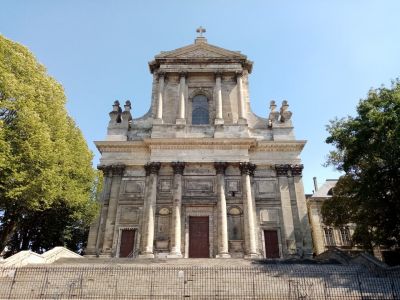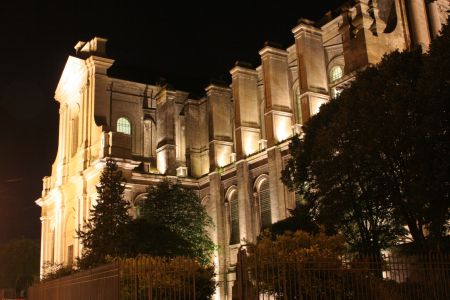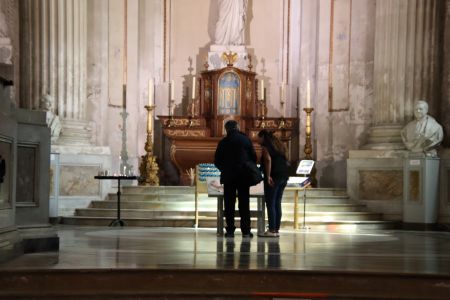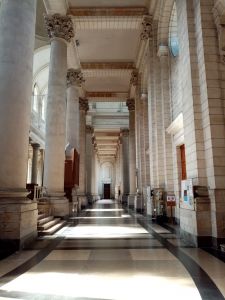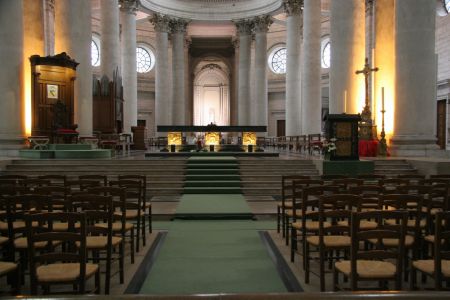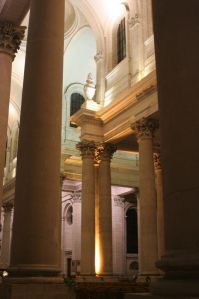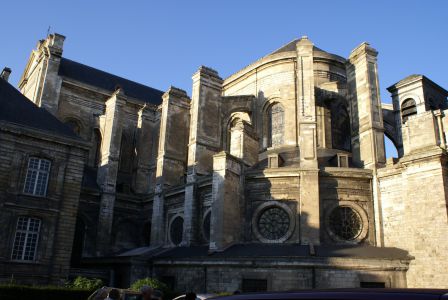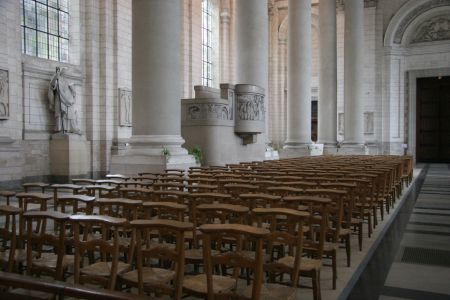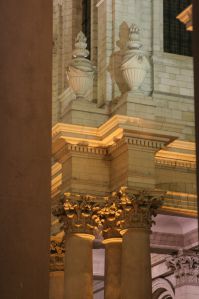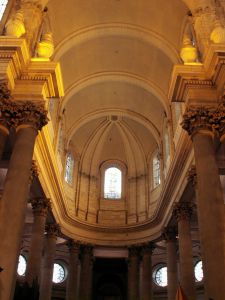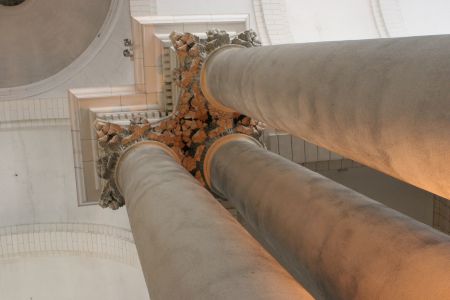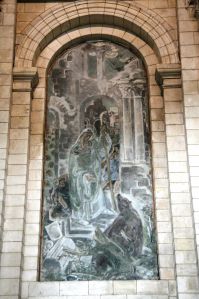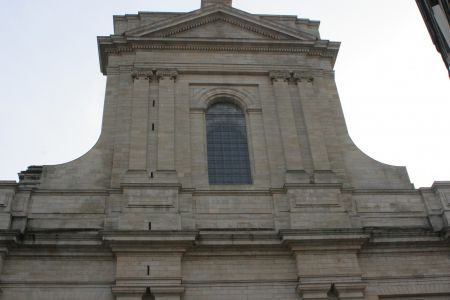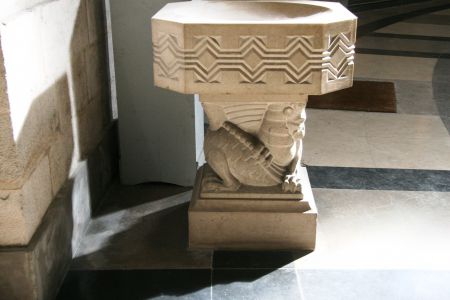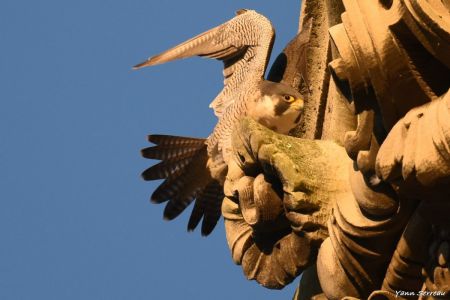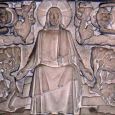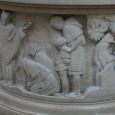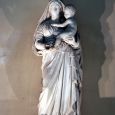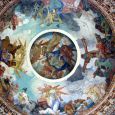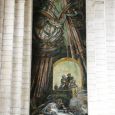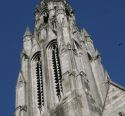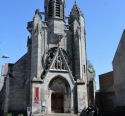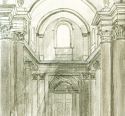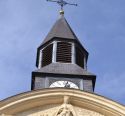Cathedral | 1770 | Neoclassical | Catholic Church





Map
Opening hours
01 July - 31 August
Mon -
Tue 11.00 - 17.00
Wed 9.00 - 17.00
Thu 11.00 - 17.00
Fri 9.00 - 17.00
Sat 11.00 - 17.00
Sun 11.00 - 17.00
01 September - 31 December
Mon
Tue 14.30 - 17.00
Wed 14.30 - 17.00
Thu 14.30 - 17.00
Fri 14.30 - 17.00
Sat 14.30 - 17.00
Sun 14.30 - 17.00
01 March - 30 June
Mon
Tue 14.30 - 17.00
Wed 14.30 - 17.00
Thu 14.30 - 17.00
Fri 14.30 - 17.00
Sat 14.30 - 17.00
Sun 14.30 - 17.00
As the cathedral is opened by volunteers, it may be closed on an exceptional basis depending on their availability. In the event of closure, a message will be posted on this page and on the door of the building.
Currently: restoration of the cathedral's great organ. To follow the latest news on this subject, click here...
The reception and shop are open from 3pm to 5pm on the days they are open, depending on the availability of volunteers.
Guided tour
Religious offices
On the occasion of other religious ceremonies, the cathedral will remain open at the times indicated above, but unrestricted access will be limited. Thank you for your understanding.
During the summer: Wednesdays and Thursdays at 9am, 14 July and 15 August at 10.30am.
Description
One of the most impressive neo-classic 18th century buildings of western Europe, the cathedral was the abbey church of the Abbey of Saint Vaast still next to it today. The origins of the whole go back to the 7th century. The abbey was rebuilt in 1740 and the abbey church around 1760.
A remarkable building designed by the Parisian architect Contant d’Ivry, who used plans originally destined for the church of the Madeleine in Paris.
Its particular luminosity is due to the white stone walls, and the vast grisaille glazed windows. Its high vaults are impressive, its architecture surprising, and the rows of columns which support the attic storey are majestic.
During the 1914-1918 war it was almost completely destroyed and was rebuilt after identically. On the other hand, the interior furnishing were re-designed in the Art Deco style by major artists of the renewal of Church Art in the 1930’s.
Photos
Remarkable elements
The Pulpit
Work of Marcel Gaumont (artist resulting from the renewal of sacred art), it represents on its façade Christ - twice bigger than his disciples - sitting on a rock, in the middle of an olive garden. He has open arms, in an attitude of humility and acceptance. To his right and left, the disciples listen with their heads down. On each side, the four evangelists are represented in writing sessions with their attributes.
The baptismal font
Marcel Gaumont's work, in sculpted marble, they represent two stories: - on one side, the baptism of Christ by John the Baptist, surrounded by angels holding out his clothes to him; - on the other side, Saint Vaast evangelizer blesses a group of newly baptized people: three generations are represented (grandparents, children, grandchildren), near a broken stele, symbol of paganism.
The Virgin and the Child
Cortot's work of the early nineteenth century, it was offered in 1820 to the cathedral by King Louis XVIII. It is a representation of the Virgin in a classical style, very inspired by the canons of Greco-Roman sculpture.
The Dome of the Chapel of the Virgin Mary
The realization of the first fresco was entrusted to Delacroix who had it executed by Daverdoingt; the current fresco was painted by Maret in 1933 it is a homage to Mary, mother of Jesus, queen of heaven. The painter represents several scenes of Mary's life and integrates Mary surrounded by scouts at the bedside of soldiers on the battlefield.High Altar
Saupique's work, monolithic labrador granite table and gilded bronze pillars, evoking Christ and the mystery of the Eucharist: the mystical lamb (nave side) faces the Resurrection (choir side) represented by two phoenixes placing their head on the letter X of Chrism. The other faces show animals referring to Christ: lamb, pheasant, dove, fish.
Canvases of the Nativity and Resurrection
Works of Desvallières, one of the renovators of religious painting in the 20th century. He recommends looking at these paintings at the same time, in order to better understand and interpret them. Indeed, they are in identical tones, but in reverse: on the Nativity canvas, the movement descends from heaven to earth; on the Resurrection canvas, the movement takes us to heaven.
Events at
Notre-Dame de l'Assomption et Saint-Vaast
Nearby
Circuit
Church trail in Arras
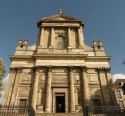
Description of the route Leave Saint-Jean-Baptiste Church and walk along Place des Héros, admiring the belfry. Pass the Place de la Vaquerie and continue straight ahead, rue Ernest de Lannoy.





